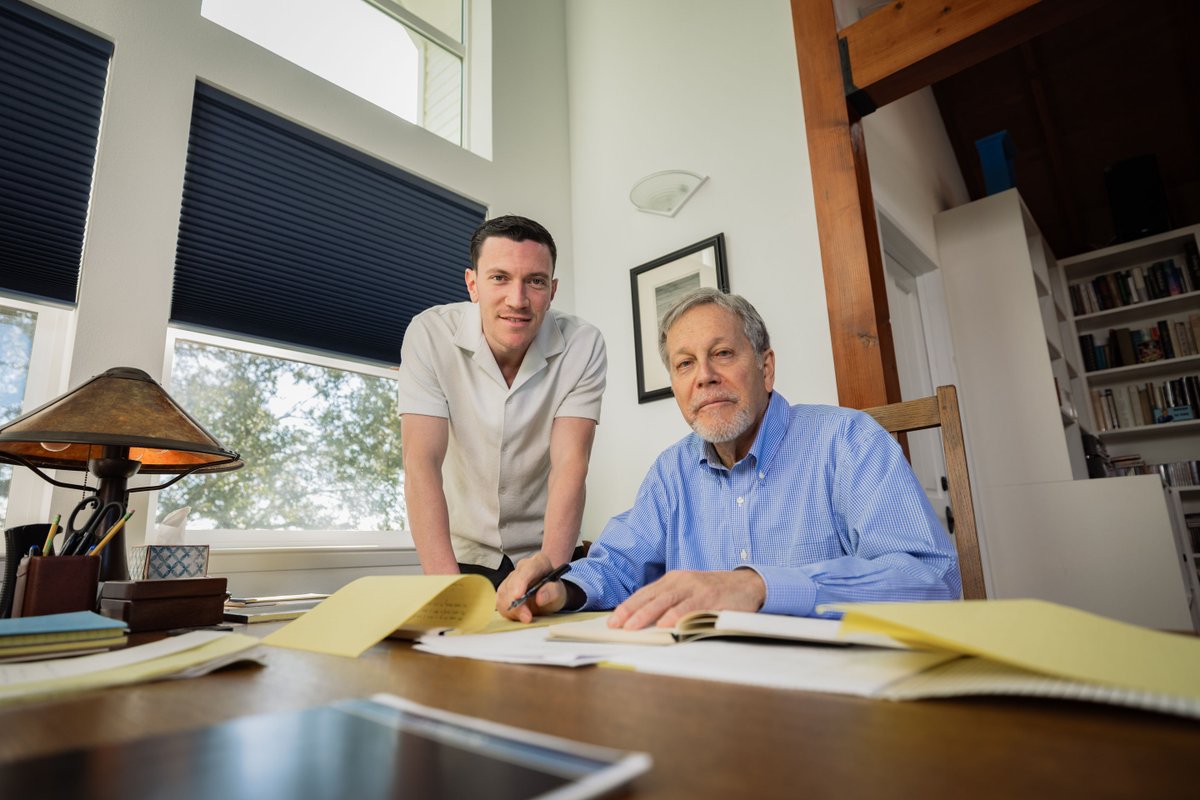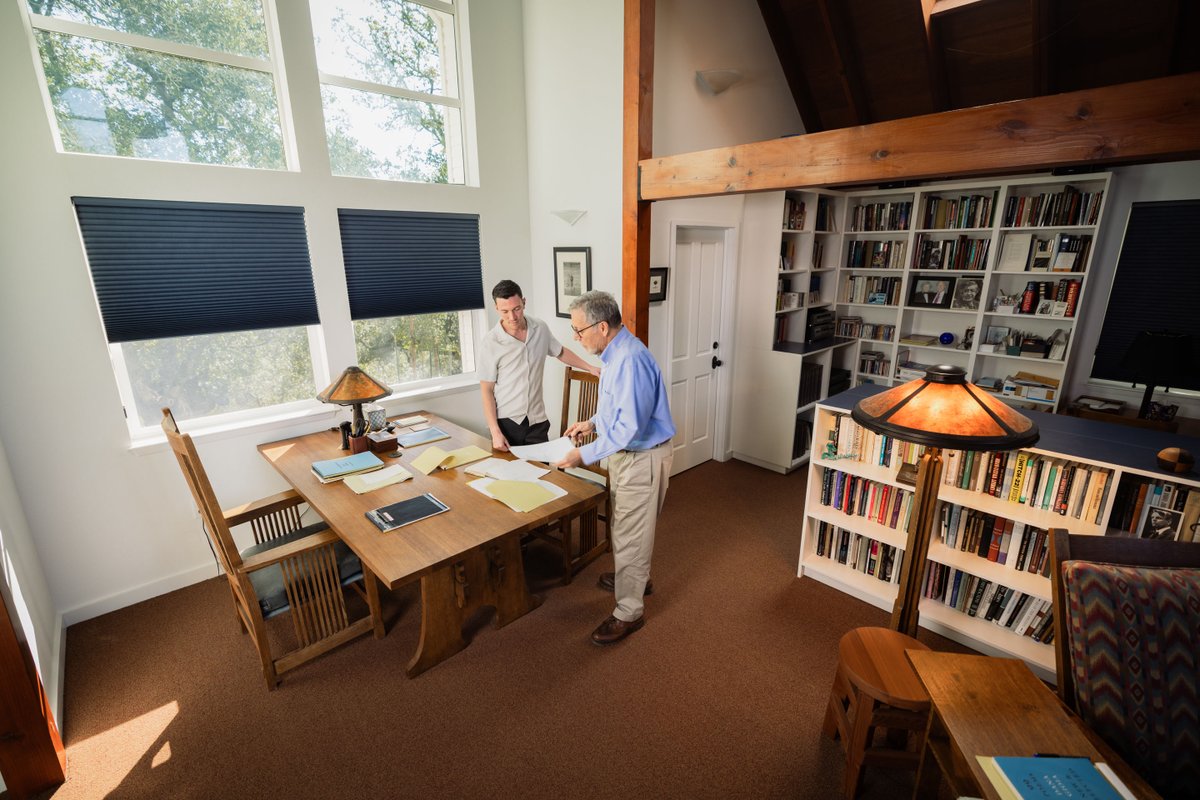Bryson DeChambeau might be the most innovative athlete in the world right now.
He just won his first major championship and is changing how golf is played at the highest levels. People call him "The Mad Scientist of Golf." Here's what you can learn from him.
THREAD
He just won his first major championship and is changing how golf is played at the highest levels. People call him "The Mad Scientist of Golf." Here's what you can learn from him.
THREAD
1. Great ideas are buried in history
Bryson's swing is inspired by a 1969 book called The Golfing Machine. It describes 144 ways you can swing a club and inspired Bryson to adopt a "single plane swing." It's one of the most controversial books ever written about golf.

Bryson's swing is inspired by a 1969 book called The Golfing Machine. It describes 144 ways you can swing a club and inspired Bryson to adopt a "single plane swing." It's one of the most controversial books ever written about golf.


2. Experiment with yourself
Most players have irons of different lengths, but all of Bryson's are 37.5 inches long. Unlike other pros, all his irons have the same swing weight. Their lie angles are 10 degrees more upright than usual, which is why his swing looks funky.
Most players have irons of different lengths, but all of Bryson's are 37.5 inches long. Unlike other pros, all his irons have the same swing weight. Their lie angles are 10 degrees more upright than usual, which is why his swing looks funky.

3. Follow the math
Bryson studied @MarkBroadie's ideas and determined that if he wanted to be #1 in the world, he needed to hit the ball farther. To do that, he gained 40 pounds, started swinging as hard as possible, and changed his swing. Now, he's the longest driver on tour.


Bryson studied @MarkBroadie's ideas and determined that if he wanted to be #1 in the world, he needed to hit the ball farther. To do that, he gained 40 pounds, started swinging as hard as possible, and changed his swing. Now, he's the longest driver on tour.
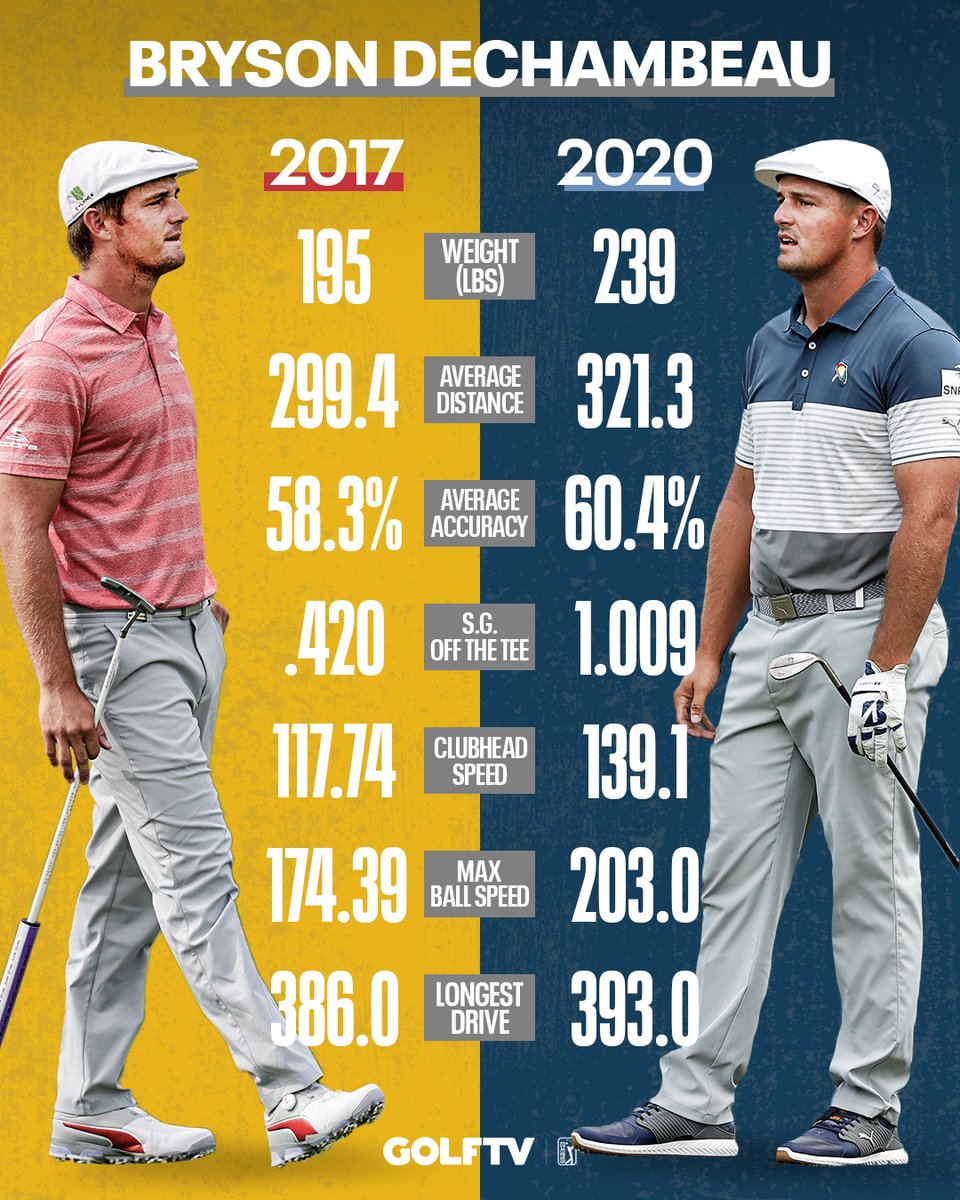


4. Make progress by turning an art into a science
For all of golf history, golfers putted based on their feel and intuition. But Bryson uses a system called vector putting where he uses math to compute the break and determine how the ball will roll along the grass.
For all of golf history, golfers putted based on their feel and intuition. But Bryson uses a system called vector putting where he uses math to compute the break and determine how the ball will roll along the grass.
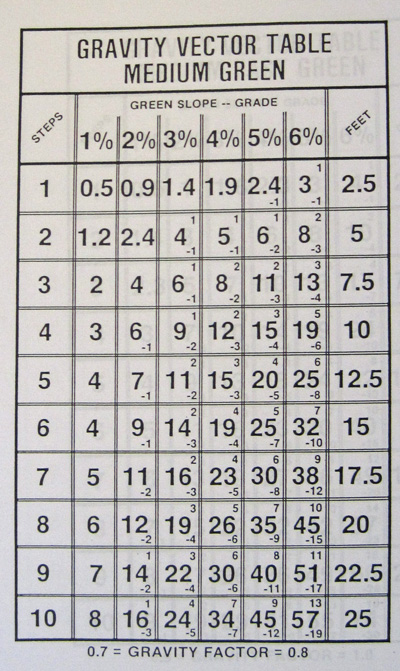
5. Optimal performance happens somewhere between conventional wisdom and what your body tells you
Most trainers will tell you to rest, but Bryson DeChambeau works out every day. Most golf coaches tell you to hit with a 7-10 degree driver, but Bryson's is only 5.5 degrees.
Most trainers will tell you to rest, but Bryson DeChambeau works out every day. Most golf coaches tell you to hit with a 7-10 degree driver, but Bryson's is only 5.5 degrees.
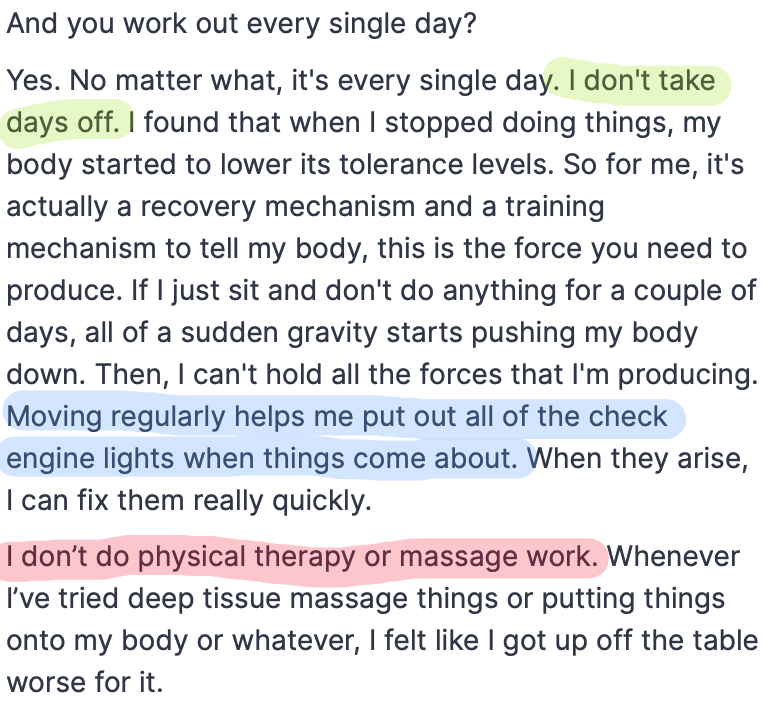
6. If you’re innovative, people will laugh at you
Bryson’s been criticized for turning golf into a science. Instead of “trusting his feel,” he pulls from physics and geometry. He’s the only golfer I’ve ever seen who consistently brings a launch monitor to the driving range.

Bryson’s been criticized for turning golf into a science. Instead of “trusting his feel,” he pulls from physics and geometry. He’s the only golfer I’ve ever seen who consistently brings a launch monitor to the driving range.


7. Seeing that experts are wrong in one area inspires you to question conventional wisdom in other areas too.
He first questioned conventional wisdom with "The Golfing Machine." Then, he did it by putting big grips on his clubs. Now his goal is to live for "130 or 140" years.


He first questioned conventional wisdom with "The Golfing Machine." Then, he did it by putting big grips on his clubs. Now his goal is to live for "130 or 140" years.

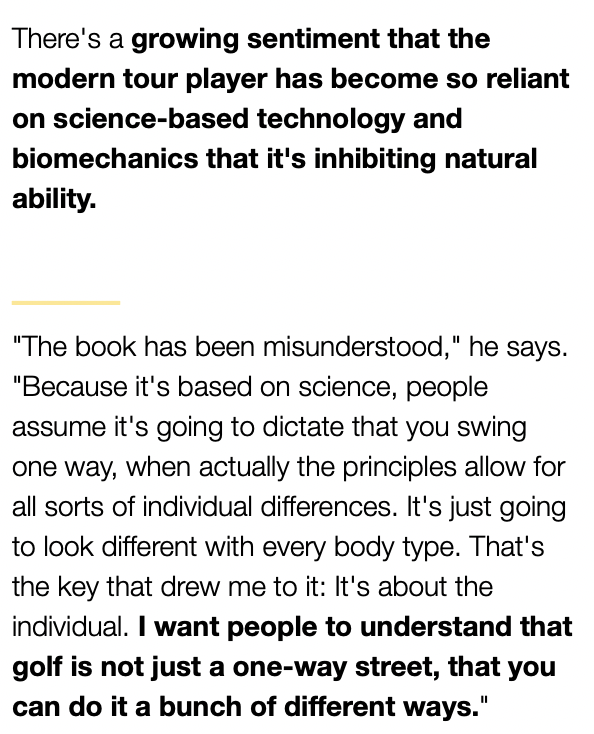

8. Identify the highest leverage ways to improve
Professional golf increasingly rewards people who drive the ball far. But Bryson’s also improved his putting.
When he first turned pro, he was 157th in putting. Now, he’s 12th. Likewise, he’s climbed from 55th to 2nd in driving.
Professional golf increasingly rewards people who drive the ball far. But Bryson’s also improved his putting.
When he first turned pro, he was 157th in putting. Now, he’s 12th. Likewise, he’s climbed from 55th to 2nd in driving.

9. Work hard
The night before his US Open win, he was the last player on the driving range.
"People don't realize how hard I work to try and get a better understanding of my biomechanics. Right around 14, I started working really hard and that's kind of what changed my game."

The night before his US Open win, he was the last player on the driving range.
"People don't realize how hard I work to try and get a better understanding of my biomechanics. Right around 14, I started working really hard and that's kind of what changed my game."

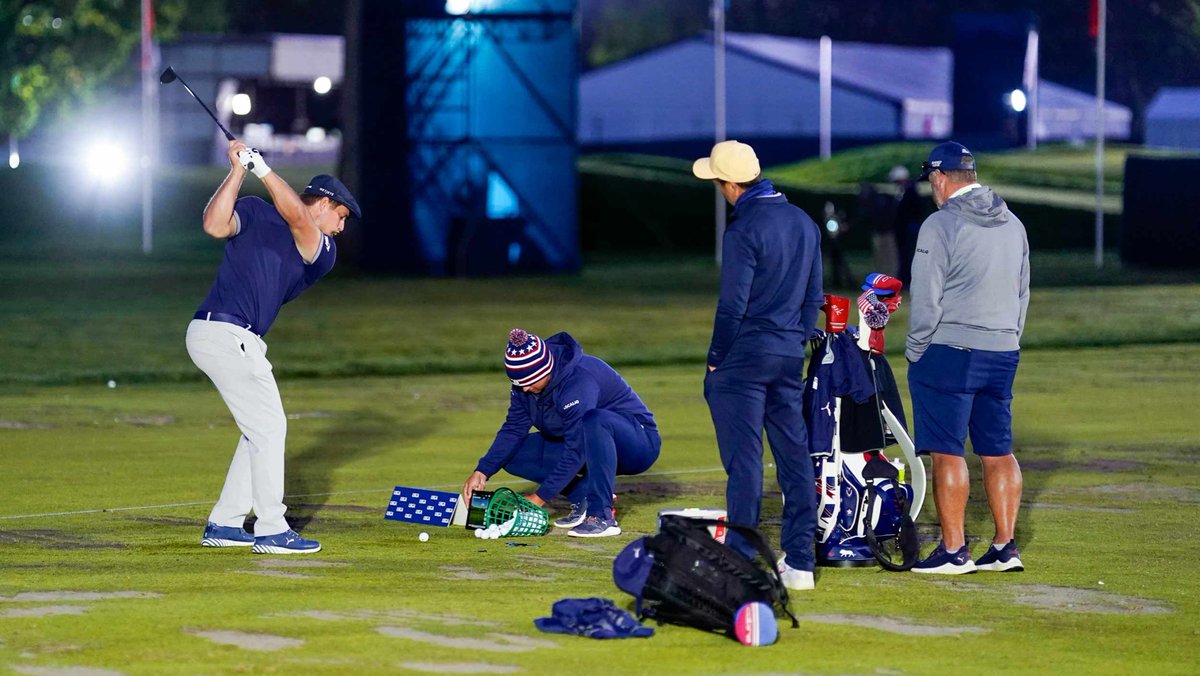
10. Measure what you can
Bryson gets instant feedback after every shot on the driving range, which is unprecedented in the golf world.
The data pays off too. With a 200 mile-per-hour ball speed, this drive drive flew 365 yards — more than 3.5 football fields.
Bryson gets instant feedback after every shot on the driving range, which is unprecedented in the golf world.
The data pays off too. With a 200 mile-per-hour ball speed, this drive drive flew 365 yards — more than 3.5 football fields.

11. Unique people do unique things, even outside their main area of expertise
Bryson's autograph is as unique as his approach to the game. Even though he's right-handed, he often signs his autograph backward with his left hand.
Bryson's autograph is as unique as his approach to the game. Even though he's right-handed, he often signs his autograph backward with his left hand.

12. Extreme results require extreme dedication.
Bryson once said: "I can be good at anything if I love it and dedicate myself. And I love history. I love science. I love music. I love golf. I love learning. I love life. I love trying to be the best at anything and everything."
Bryson once said: "I can be good at anything if I love it and dedicate myself. And I love history. I love science. I love music. I love golf. I love learning. I love life. I love trying to be the best at anything and everything."
13. Greatness is grueling
Bryson and his coach Chris Como set up the ideal indoor practice studio. This video shows how he swings as hard as he possibly can to increase his clubhead speed. Note the force plates under his feet and the data at the end of the video.
h/t @GOLF_com
Bryson and his coach Chris Como set up the ideal indoor practice studio. This video shows how he swings as hard as he possibly can to increase his clubhead speed. Note the force plates under his feet and the data at the end of the video.
h/t @GOLF_com
14. Cutting-edge innovation happens in weird ways
Bryson works out his brain by watching movies. He measures the peaks and valleys of his brain's electrical current, with a goal of staying calm during stressful scenes.
He also monitors his brain activity on the course.


Bryson works out his brain by watching movies. He measures the peaks and valleys of his brain's electrical current, with a goal of staying calm during stressful scenes.
He also monitors his brain activity on the course.

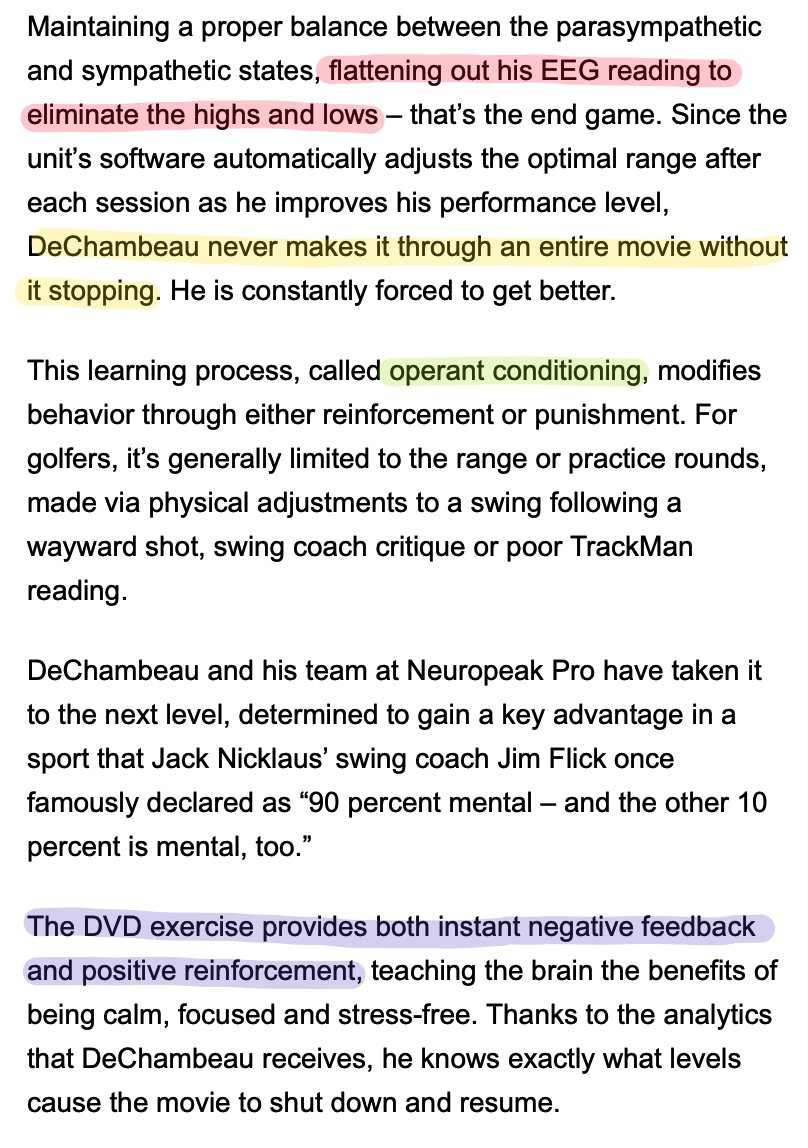

15. Collect more data
Bryson insists on collecting data beyond the driving range. He's the first golfer I've seen that brings his launch monitor onto the course so he can mimic tournament conditions.
With all that data, he can study trends and identify where he can improve.

Bryson insists on collecting data beyond the driving range. He's the first golfer I've seen that brings his launch monitor onto the course so he can mimic tournament conditions.
With all that data, he can study trends and identify where he can improve.


16. Stick to the plan
At the gym, Bryson focuses on isolation exercises instead of compound movements like squats and deadlifts.
Gaining weight gives him stability on the course which has helped him increase his swing speed to 135mph and his ball speed to 200 mph.
At the gym, Bryson focuses on isolation exercises instead of compound movements like squats and deadlifts.
Gaining weight gives him stability on the course which has helped him increase his swing speed to 135mph and his ball speed to 200 mph.
17. Keep pushing the limits, even after other people think you’ve made it.
Right after winning the US Open, Bryson announced that he’s going to experiment with a 48-inch driver (3 inches longer than the norm) so he can drive the ball even farther — “maybe 360 or 370 yards.”
Right after winning the US Open, Bryson announced that he’s going to experiment with a 48-inch driver (3 inches longer than the norm) so he can drive the ball even farther — “maybe 360 or 370 yards.”
18. Perform intuitively
Bryson practices like a scientist so he can play like an artist. Here's what he learned from his hero, Moe Norman: "Why was he able to hit it straight every time? It wasn’t that he was thinking about everything. More like he was thinking about nothing."
Bryson practices like a scientist so he can play like an artist. Here's what he learned from his hero, Moe Norman: "Why was he able to hit it straight every time? It wasn’t that he was thinking about everything. More like he was thinking about nothing."
19. Ground yourself in timeless ideas
In 2014, Byson almost quit playing golf. He was depressed and unhealthily obsessed. Desperate for answers, he turned to his favorite Bible passage from Colossians 3:23: "Whatever you do, work heartily, as for the Lord and not for men."
In 2014, Byson almost quit playing golf. He was depressed and unhealthily obsessed. Desperate for answers, he turned to his favorite Bible passage from Colossians 3:23: "Whatever you do, work heartily, as for the Lord and not for men."
20. Surround yourself with experts
Early in the week of his US Open win, @MarkBroadie and Bryson’s coach realized that the fairways were so small that driving distance would be a deciding factor.
Bryson heard that, doubled-down on long drives, and over-powered the golf course.
Early in the week of his US Open win, @MarkBroadie and Bryson’s coach realized that the fairways were so small that driving distance would be a deciding factor.
Bryson heard that, doubled-down on long drives, and over-powered the golf course.
More than 1 million people have now seen this Twitter thread, making it one of my most popular threads of all-time.
If you want to read it as an article, I published it on my website.
perell.com/tweetstorms/wh…
If you want to read it as an article, I published it on my website.
perell.com/tweetstorms/wh…
21. If you’re want to become world class at your craft, it helps to have fun
Here’s a video where Bryson hits a driver with 203 mph ball speed. That’s insane. For reference, the PGA Tour average is 167 mph.
He’s like a kid in this video too — playing instead of working.
Here’s a video where Bryson hits a driver with 203 mph ball speed. That’s insane. For reference, the PGA Tour average is 167 mph.
He’s like a kid in this video too — playing instead of working.
22. Trust your DNA
Bryson believes that his only constraints are the laws of physics and the rules of golf. That’s why he continues to experiment with his technique, even after he wins a major championship.... it’s who he is.
Great interview with his coach, Chris Como.
Bryson believes that his only constraints are the laws of physics and the rules of golf. That’s why he continues to experiment with his technique, even after he wins a major championship.... it’s who he is.
Great interview with his coach, Chris Como.
23. Use the data of science and the wisdom of intuition
Bryson may take a scientific approach to the game but that doesn't mean he ignores his hunches. Internalizing the technical side of the game should actually improve your intuition.
Love these ideas from his coach below.
Bryson may take a scientific approach to the game but that doesn't mean he ignores his hunches. Internalizing the technical side of the game should actually improve your intuition.
Love these ideas from his coach below.

24. Question the standard trade offs
Bryson refused to accept that there was a trade off between distance and accuracy. He copied both the world’s long drive champions and the straightest hitters in golf history.
What Billy Beane is to baseball, Bryson DeChambeau is to golf.
Bryson refused to accept that there was a trade off between distance and accuracy. He copied both the world’s long drive champions and the straightest hitters in golf history.
What Billy Beane is to baseball, Bryson DeChambeau is to golf.
You don’t reach a state of mastery when you know it all. You reach it when you’ve absorbed the knowledge so deeply that it becomes a part of you. Though Bryson thinks like a scientist, he ultimately trusts his intuition.
Here's my Bryson-inspired essay.
perell.com/blog/practice-…
Here's my Bryson-inspired essay.
perell.com/blog/practice-…
27. Find what you’re uniquely good at
Bryson is an exceptionally quick information-processor, as shown by his ability to solve Rubik’s Cubes.
With that mentality, he prefers practicing instead of playing.
Bryson is an exceptionally quick information-processor, as shown by his ability to solve Rubik’s Cubes.
With that mentality, he prefers practicing instead of playing.

Mastery shows up in all kinds of weird ways. When you're an amateur, the act of performing can send you into a daze. But professionals work with superhuman presence, sort of like how Tiger Woods still remembers shots from 20 years ago.
LeBron James, too.
LeBron James, too.
https://twitter.com/david_perell/status/1366596660860776454?s=20
Bryson’s unique approach to the game has him looking at golf courses in ways that players have never looked at them before.
I haven’t seen golf fans roar like this since Tiger Woods was in his prime.

I haven’t seen golf fans roar like this since Tiger Woods was in his prime.

• • •
Missing some Tweet in this thread? You can try to
force a refresh







